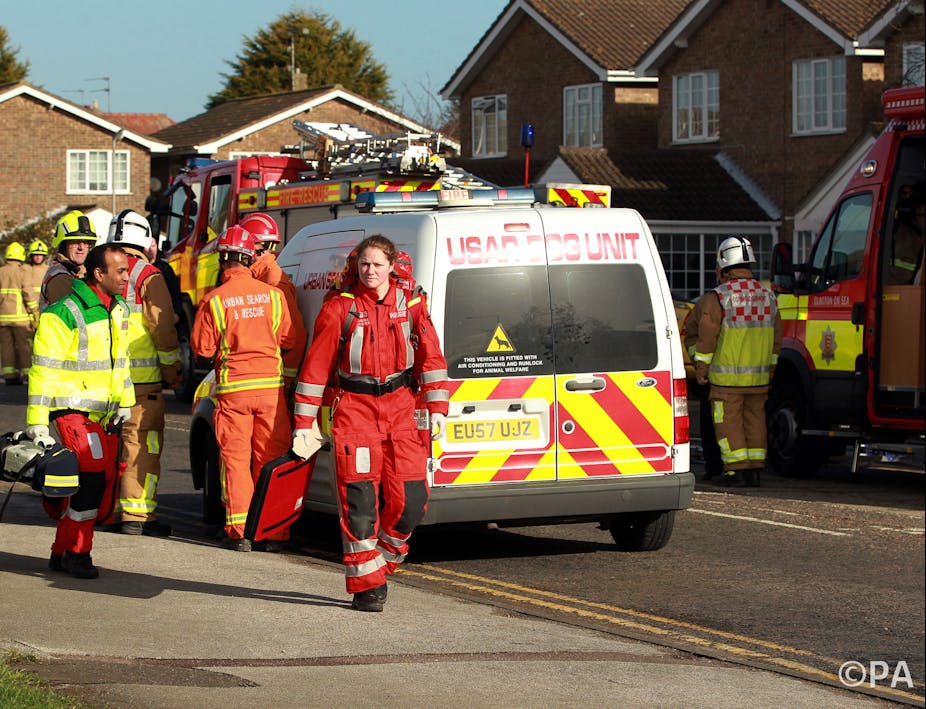Forecasters predict a wetter than normal start to March that will no doubt hamper efforts to bring an end to the misery of those whose homes are underwater. These extended floods and bad weather reveal the changes in how emergencies are handled.
Extreme weather conditions such as rainfall, wind, heat, cold, and tidal surges are becoming more common, and their impact felt for longer. Risk management planning by emergency services needs to start accommodating medium and long-term changes to the pattern of threats, particularly from the environment. This is something that Public Management and Governance Research Group and the Emergency Services Research Unit are already working on with the emergency services and government.
One of the key questions to arise from the current floods is why the government has seemed so out of touch with what is happening on the ground and why the preparations and responses to the emergency have been so uncoordinated. After all, we live in a world of round-the-clock media coverage and instant access to news on mobile phones and portable computers. Yet the government’s response to floods that began in December came weeks, even months late.
Part of the answer lies in the closure in 2011 of the Government Offices, a regional network that functioned as the local points of presence of central government departments. This has led to cuts in the capacity and funding of the regional resilience and emergency planning teams that had operated in the nine English regions.
The Civil Contingencies Act replaced the earlier and very much outdated Civil Defence and Emergency Powers legislation, most of which dated back to World War II.
This came about as domestic and terrorist threats to services, along with widespread flooding in England and Wales between 1998 and 2000 and the outbreak of foot and mouth disease in 2001, became more numerous and their social and economic impacts more widespread.
This Act established Regional Resilience Teams in each regional office, small groups of dedicated specialists that co-ordinated and developed local resilience networks which brought together emergency planners and emergency responders. These include police, fire, ambulance and coastguard services, but also experts from for example the Environment Agency, Network Rail, Highways Agency, NHS, and electricity, gas and water utilities.
These specialists prepared and updated emergency plans and established a two-way dialogue between the centre office and local emergency responders through Local Resilience Forums. At times of emergencies they could call on their local knowledge, assistance and contacts in the area, or of the teams within the offices.
These teams knew their local areas well. They were in regular contact with all the key people on the ground in local communities – people who would know where and what resources were available, who would need to be involved, and how to effectively co-ordinate their deployment.
However, the regional Government Offices were caught up in the bonfire of the quangos and swept away in a tide of austerity rhetoric and an anti-regional agenda spearheaded by Eric Pickles at the Department of Communities and Local Government.
Now, what’s left of the Regional Resilience Teams have become the responsibility of the Cabinet Office, somewhat defeating the point of their local links, and numbers have been slashed. Staff now operate in a semi-peripatetic way across one of the three regions England is now divided into, essentially the North, Midlands and South. Inevitably these staff have a much thinner network of contacts, and no real chance of knowing the huge geographical areas under their control in the detail needed.
The local forums have been left in place but inevitably with less support and guidance. They are all experienced in dealing with emergencies, but at a time when the affects of emergencies such as these floods are becoming more widespread and prolonged, there is a greater rather than a lesser need for better co-operation between emergency services – services which have themselves been subject to significant funding cuts.
Stripping away this layer of regional government has resulted in a demonstrable loss of organisational capacity, as well as historical knowledge and experience, all at a time of rising demand. The government is well aware of the need for co-ordinated response – it established the Joint Emergency Services Interoperability Programme between the three main emergency services which produced it’s first publication just weeks before the floods began. But for those on the ground, it’s a case of fine words butter no parsnips.

